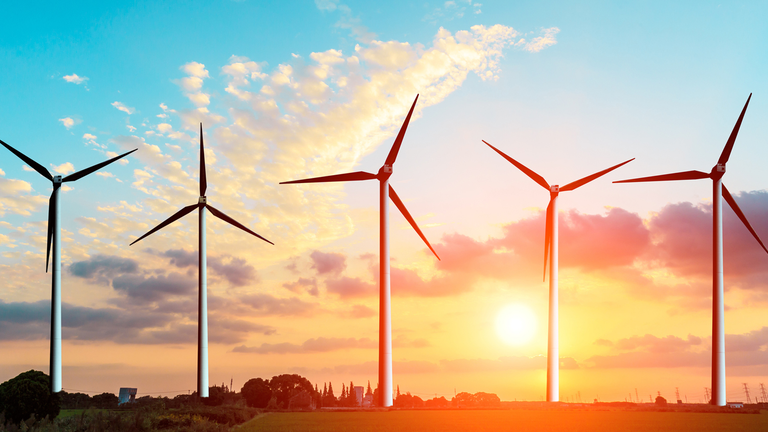What Are Turbines? – Types Of Turbines & Their Applications
5 min read
If you are interested in science and tech, it is likely that you have come across the word turbine in various places. Even otherwise, turbines are a popular device used in converting one form of energy to the other. So what are the types of energy that you can apply and generate from a turbine, and how can you use that energy? Find out all the details about turbines, their types and applications from this in-depth, informative blog.
What Are Turbines?
In simple words, turbines may be understood as a rotating mechanical device that converts kinetic energy produced by moving fluids to mechanical or electrical energy that can be used for a variety of purposes.
Though the work of a turbine may sound to be simple, in reality, there are a number of processes involved along with innovations in design to ensure that the maximum amount of energy gets transformed from one form to the other with the least possible wastage in the transformation process.
Typically, a turbine is made out of several blades that are set around a rotor. As the fluid moves through the turbine in laminar, the blades begin to turn the rotor and generate energy. The performance of a turbine is thus largely dependent on the design of the blades.
Further, for handling different kinds of fluids, different types of blades are needed. A good understanding of fluid mechanics and innovative designing ideas are required to design these blades in the best way.
Types Of Turbines
Based on the fluid with which they are compatible, the turbines can be classified into four different types. They are:
- Water turbines
- Wind Turbines
- Stream Turbines
- Gas turbines.
Let us take a close look at each of them, along with their application, to understand them better.
Water Turbines: As the name suggests, the water turbines are designed to generate energy by using water as an input. The energy stored in flowing water is immense, and this is used for the generation of electrical energy in hydropower plants. Before the water turbines are put to use in a hydropower plant, millions of liters of water are first stored in an artificial dam. Systems are made so that the water flowing out of the dam can be effectively controlled as per the requirements of the plant. Now a large pipe or penstock is installed, with the turbine placed at the mouth of the pipe. This pipe connects the dam to the power plant. When water is let out from the dam, it comes and hits the blades of the turbine at high pressure, such that they begin rotating at a very high speed. The turbine, in turn, is connected to a generator. The moving blades supply energy to the generator that produces electricity in turn. The water generators can be further classified into Impulse turbines and reaction turbines.
In the impulse turbines, the blades are replaced by half-sized buckets around the rotor. As the water fills these buckets, they start moving along with the rotor, transforming kinetic energy into mechanical energy. One of the shafts of this turbine is connected to a generator. So whatever energy is produced in turn gets converted to electricity. The Pelton turbines fall under this category.
In the reactor turbines, there are numerous impeller blades. When water flows through one side, force is generated on the other side as a reaction. Thus they have been named reaction turbines. This turbine too is connected to a generator to produce electricity. A popular example is the Kaplan turbine.
Which turbine is to be used in which plant depends on the discharge rate, the amount of water available and the like.
Wind Turbines- A very popular and affordable source of energy in the present times is wind energy. To harness the power of wind for various purposes, a wind turbine is needed. In a wind turbine, a rotor typically has three blades. When wind flows through them, the blades begin to move. However, given that wind power is not strong enough to get a generator started, a gearbox is required that helps in increasing the speed of the blades. This entire system is connected to a generator that transforms the wind energy to the other desired form of energy. The wind turbine is not just used to produce electricity, but they are also used in a number of other mechanical tasks such as threshing and the like.
Steam Turbines- The steam turbines run on jets of steam that are produced in nuclear or thermal power plants. When water gets heated, tiny droplets rise to the air in the form of steam. Though in ordinary life, the steam may not appear to be powerful; in reality, they have enough energy to move a turbine. For this, the steam is forced through a limited area and allowed to hit the turbine at great velocity. The movement of the turbine is in turn harnessed to produce electricity. Much like the water turbines, the steam turbines are also classified as impulse and reaction. However, modern designs combine the best feature of both types to create the most effective turbines. The only difference in the designing of the steam turbines is that stators alternate the rotor as they help in extracting more energy through a process known as compounding.
Gas Turbines– The gas turbines not just find their utility in generating electricity, but they are also used in several other modern mechanical wonders. These include the planes and the helicopters where they are used in the propeller. The rotating blades of the gas turbines have been designed in such a way that they suck in huge quantities of air. The sucked in the air then gets compressed, which in turn increases their temperature. The hot air is then supplied to a combustion chamber that is already supplied with fuel. As the fuel burns, the exhaust air hits the turbine and begins to move it. Gas turbines can be further classified into closed and open-cycle turbines depending on whether the exhaust air is released or reused. Most of the popular gas turbines such as Turbojet and Ramjet, however, fall in the open category.
We hope that now you have a clear understanding of turbines and their types. However, given that technology is constantly advancing as man is trying to bring in better and more efficient energy sources, too soon, new names may also join this list of turbines.




